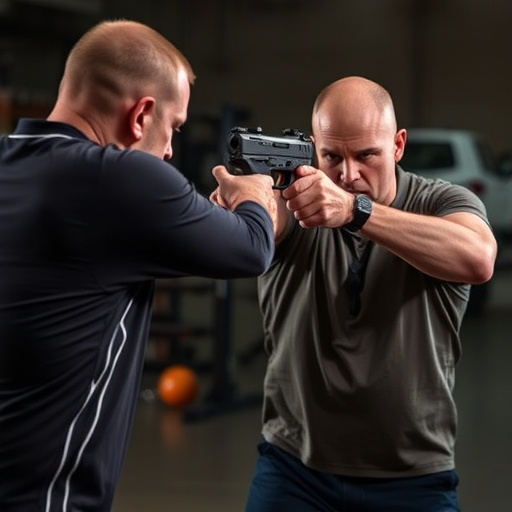Law enforcement increasingly relies on non-lethal weapons, particularly stun guns, which disrupt the nervous system through electric shocks, temporarily paralyzing individuals. Stun guns deliver high-voltage pulses through metal probes, affecting nerve impulse transmission and causing muscle spasms and temporary incapacitation. Certification programs ensure competent handlers through theoretical knowledge, practical demonstrations, and hands-on training with a focus on understanding stun gun effects on the nervous system. These weapons offer safe alternatives to lethal force, mandated in many regions due to legal requirements, while minimizing civil liberties concerns. Staying informed about technological advancements is crucial for effective use of sophisticated stun guns in de-escalating situations without causing permanent harm.
“In an era where public safety and officer well-being are paramount, non-lethal weapon training certification has emerged as a critical component of modern law enforcement. This comprehensive guide delves into the evolving landscape of non-lethal weaponry, focusing on stun guns and their profound effects on the nervous system. From understanding these tools’ unique role to exploring the science behind their operation, we navigate the certification process, legal considerations, and future trends shaping this dynamic field.”
- Understanding Non-Lethal Weapons and Their Role in Law Enforcement
- The Science Behind Stun Guns: How They Affect the Nervous System
- Certification Process for Non-Lethal Weapon Training
- Legal Considerations and Future Trends in Non-Lethal Weaponry
Understanding Non-Lethal Weapons and Their Role in Law Enforcement
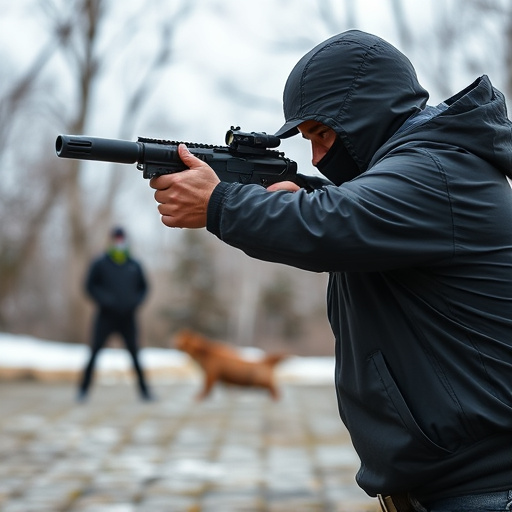
Non-lethal weapons, such as stun guns, are designed to incapacitate individuals without causing permanent harm or death. These tools have become increasingly important in law enforcement, offering a crucial alternative to traditional firearms. When deployed appropriately, non-lethal weapons can help officers manage high-risk situations effectively while minimising the potential for fatal outcomes.
Stun guns, for instance, work by delivering an electric shock that disrupts the nervous system’s function, temporarily paralysing the target. This effect is designed to render a person immobile for a short period, allowing officers to gain control and de-escalate the situation. Understanding the specific effects of stun guns on the nervous system is vital for law enforcement training. Proper certification ensures that officers can use these tools responsibly, making them valuable assets in maintaining public safety and security without resorting to lethal force.
The Science Behind Stun Guns: How They Affect the Nervous System
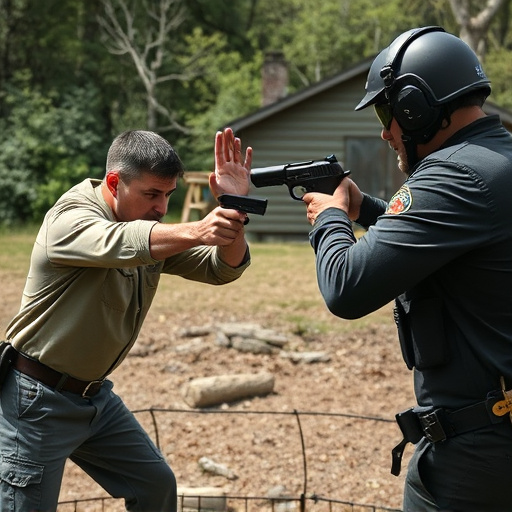
Stun guns, also known as electroshock weapons, operate by delivering a powerful electric current to disrupt the nervous system of a target. The science behind their effectiveness lies in their ability to interfere with nerve impulse transmission. When deployed, stun guns send a high-voltage, low-current electrical pulse through two metal probes, causing muscle contractions and temporary paralysis. This disruption prevents the brain from receiving signals, resulting in a temporary loss of consciousness or “stun” effect.
The impact of this technology on the nervous system is swift and powerful. The electric current can cause sodium and potassium ions to flow freely across nerve cell membranes, leading to overstimulation and subsequent exhaustion. This process disrupts normal nerve function, affecting both motor and sensory functions. As a result, individuals targeted by stun guns experience muscle spasms, loss of balance, disorientation, and temporary incapacitation, making them less dangerous to themselves and others during the intervention period.
Certification Process for Non-Lethal Weapon Training
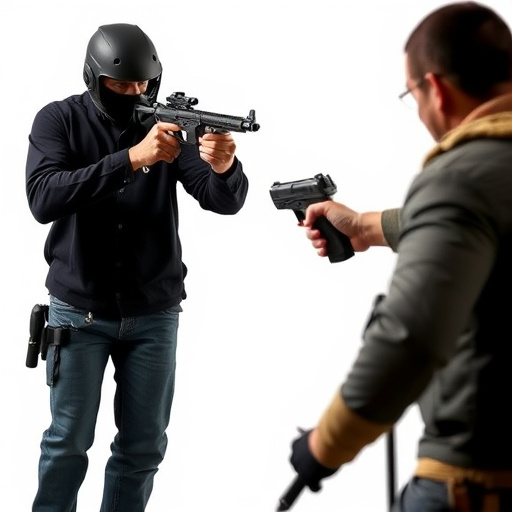
The certification process for non-lethal weapon training is a crucial step in ensuring that individuals handling these devices are competent and aware of their potential impacts. This process typically involves several stages, including theoretical knowledge assessments, practical demonstrations, and hands-on training with various non-lethal weapons such as stun guns. One key aspect that candidates must understand is the stun gun’s effect on the nervous system. Stun guns work by delivering high voltage electrical pulses, which can temporarily disrupt muscle control, leading to a powerful but non-fatal shock. This disruption can cause the target to fall to the ground and become incapacitated for several minutes, providing an opportunity for law enforcement or security personnel to subdue or apprehend them without causing permanent harm.
During training, participants learn about the different types of stun guns available, their operational principles, and the varying levels of force they exert. They also gain insights into the physiological responses that can be expected from individuals affected by these devices, including muscle spasms, disorientation, and temporary paralysis. Understanding the stun gun effects on the nervous system is essential for trainees to appreciate the importance of proper usage, safety protocols, and de-escalation techniques in real-world scenarios.
Legal Considerations and Future Trends in Non-Lethal Weaponry
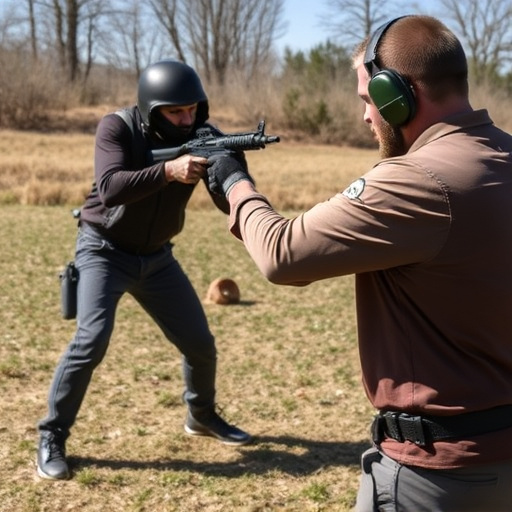
In the evolving landscape of law enforcement and personal safety, non-lethal weaponry has emerged as a critical tool, offering an alternative to traditional lethal force. As such, obtaining a non-lethal weapon training certification is not only a professional necessity but also a legal requirement in many jurisdictions. These laws vary by region, reflecting a global trend towards mitigating the use of deadly force by law enforcement and civilians alike.
Future trends in non-lethal weaponry are closely tied to advancements in technology. For instance, stun guns have evolved from simple electrical devices to sophisticated tools that target the nervous system, temporarily incapacitating subjects with minimal pain and risk of permanent injury. Such innovations not only enhance safety for both officers and suspects but also mitigate civil liberties concerns related to excessive use of force. This ongoing development underscores the importance of staying abreast of legal considerations and embracing technological advancements in non-lethal weaponry training.
Non-lethal weapon training certification is a critical step for law enforcement agencies aiming to employ these innovative tools effectively. By understanding the science behind stun guns and their effects on the nervous system (such as the precise mechanisms described), officers can ensure safe and strategic use. The rigorous certification process, coupled with legal considerations and an evolving landscape of non-lethal weaponry, empowers officers to maintain public safety while adhering to ethical standards. As these technologies continue to advance, staying informed and trained will be essential for keeping communities secure.
